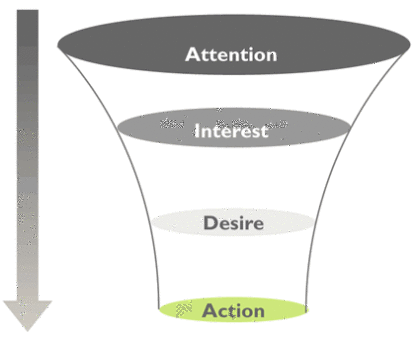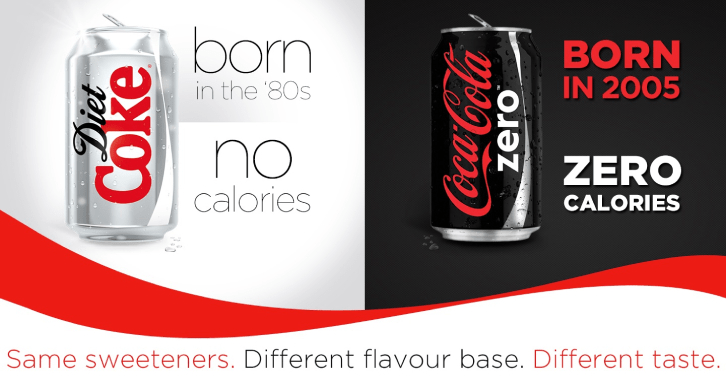The AIDA Marketing Model: A Strategy for Paid Advertising
Marketing strategy is a long-term project and an overall plan for any organization. Its primary goal is to achieve a sustainable competitive advantage and understand customers’ needs and wants. It includes everything from determining who your customers are to choosing channels to reach them.
Today, many store and e-shop owners focus primarily on a “strategy” oriented to quick sales, mainly pushing people to buy. This is not a sustainable path that could lead to the aforementioned competitive advantage.
A well-crafted strategy will reach your target audience in all the stages they must go through. This includes people who have never heard of you, shoppers, and repeat customers.
The key to generating leads is setting up a marketing funnel that combines branding and performance marketing. This results in higher sales and a higher return on investment.
The AIDA model and its phases
Each marketing funnel is unique and tailored to your goals. We will look at the AIDA model, which describes 4 phases:
- Attention
- Interest
- Desire
- Action

Attention
Initially, it is necessary to draw attention to your product or service. This widest part of the funnel contains the most significant number of potential buyers, and it’s up to you how many of them you convert to the bottom of the funnel to buy. One way to do this is to build brand awareness.
Channels you can use to build awareness at this stage include:
- Podcasts
- Spots on the radio
- Billboards
- TV commercials
- Influencers
- Paid advertising (Google, Youtube, Facebook)
- Events
There are many ways to reach your target audience. Your customers come to you from different sources, which can tell you which channel is worth investing more in and vice versa.
Interest
At this stage, your customers are interested in finding a solution to the problem you are offering. You can navigate them to your blog page for more details or your product page if the product could be more pensive. It is essential to keep the customer interested. A well-designed website, loading time, product filters, correctly categorized products, or functional pages can help you with this.
Channels you can use at this stage include:
- SEO
- Content marketing
- Social networks
- E-mail marketing
- Paid advertising (Google, Youtube, Facebook)
In this phase, customers get to know you and your products. They can search for you on social networks, read reviews, or browse the web between product pages. Therefore, more channels should be used, and the website’s functionality should be remembered to help customers make a conversion (purchase).
Desire
This phase aims to turn “I like it” into “I want it”. People like to buy from brands they trust and like. Once your customers know you have a solution to their problem, you should focus on showing them the product’s benefits. Why should they buy from you? Why is your solution to the problem (product/service) the best?
Many potential customers will start comparing products with competitors, whether it’s their benefits, price, or quality. So, build their trust by sharing positive reviews, case studies, and before and after photos. These are just a few ways to move customers to the bottom of the (buying) funnel.
You can start getting the first micro conversions at this stage, such as adding to the cart or a wish list and signing up for the newsletter. Make your prospects an offer they can’t refuse. If they have already made one of the micro-conversions, reach them by remarketing with a discount on the products in the cart or a limited-time promotion that motivates them to buy.
The channels you can use in this phase are, for example:
- Content marketing (blog article about product benefits)
- Remarketing (FB, YouTube, Google)
- SEO
- E-mail marketing
Take look at the image below of how Coca-Cola introduced its new product, Cola Zero, in the campaign.

Action
The last stage of the marketing funnel is where the most essential part of the buying journey takes place, which is the action (purchase). We must help potential customers with the right call to action to make a purchase. A good ad should create a sense of urgency to motivate action now. Also, remember to remove barriers in the shopping journey, such as confusing shopping carts and poor selection of carriers or payment methods. The more sophisticated your shopping cart process is, the more customers you will have and the more often they will return to you.
It would help if you attracted attention and interest, motivated users to interact with you and your product, and compelled them to act. To determine which metrics are most important to you at each stage, you need to choose a few key performance indicators (KPIs) based on which you can optimize your strategy.
What metrics to track?
In this section, I will give you a few examples of how to track metrics for each phase of the AIDA model:
- Attention – Impressions (number of impressions), unique visitors, CTR (click-through rate), advertising reach.
- Interest – View through rate, time spent on the page, Bounce rate, article read depth, traffic sources.
- Desire – Bounce rate, new vs. returning visitors, web searches, micro-conversions (newsletter registration, cart addition, cart abandonment).
- Action – Purchase, number of orders, conversion rate, CPA (price for one purchase).
When setting goals and tracking metrics, please choose the most important ones to discover the root causes and barriers your customers encounter on their journey to purchase. This will help you avoid many problems and allocate the budget to the resources that bring you the most value.
What formats should you choose in terms of PPC?
- Attention
Run awareness campaigns on the content network in Google Ads through banner ads and YouTube video ads. The success of your ad will depend on how many users see it and whether you can capture the viewer’s attention. The primary metrics will be the number of ad impressions and the click-through rate (CTR). Moreover, already at this stage, you can target the right people based on age, location, language, interests, and purchase intentions.
- Interest
When creating a campaign, you should think that the customer already has a problem for which he is looking for a solution, and you have it. Therefore, we can arouse his interest in our product, e.g., in Google Search campaigns, and direct him to the blog, where he can get more information, or directly to the product page. Get clear on your keywords and find out what people search for when they realize they have a problem. Search advertising will help you build brand awareness and ultimately reach your target audience during the information stage of the user journey.
- Desire
We’re getting to a stage where building trust between you, the product, and the customer is essential. Why should he want your product? What will it bring him? Show him the unique features and benefits of YouTube video advertising. You can also use influencers or celebrities who tell their stories of how your product helped them. You can also communicate these benefits in remarketing Display campaigns on Google and Facebook. You’ll spark customer interest and create a desire that can lead to conversion.
- Action/action
The final stage is to engage and motivate a specific audience to make a purchase decision and convert into a customer. Some may already be on the verge of buying and need a gentle nudge. You can use Google search ads, Google content network ads, remarketing, dynamic remarketing, Pmax campaigns, and Price comparators, such as Heureka.
Following the AIDA model will give you a clear and concise way to turn visitors into paying customers from awareness to conversion. Taking the time to evaluate how you execute your marketing strategies can help you significantly improve your business.
